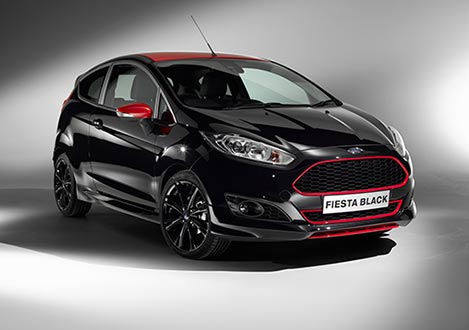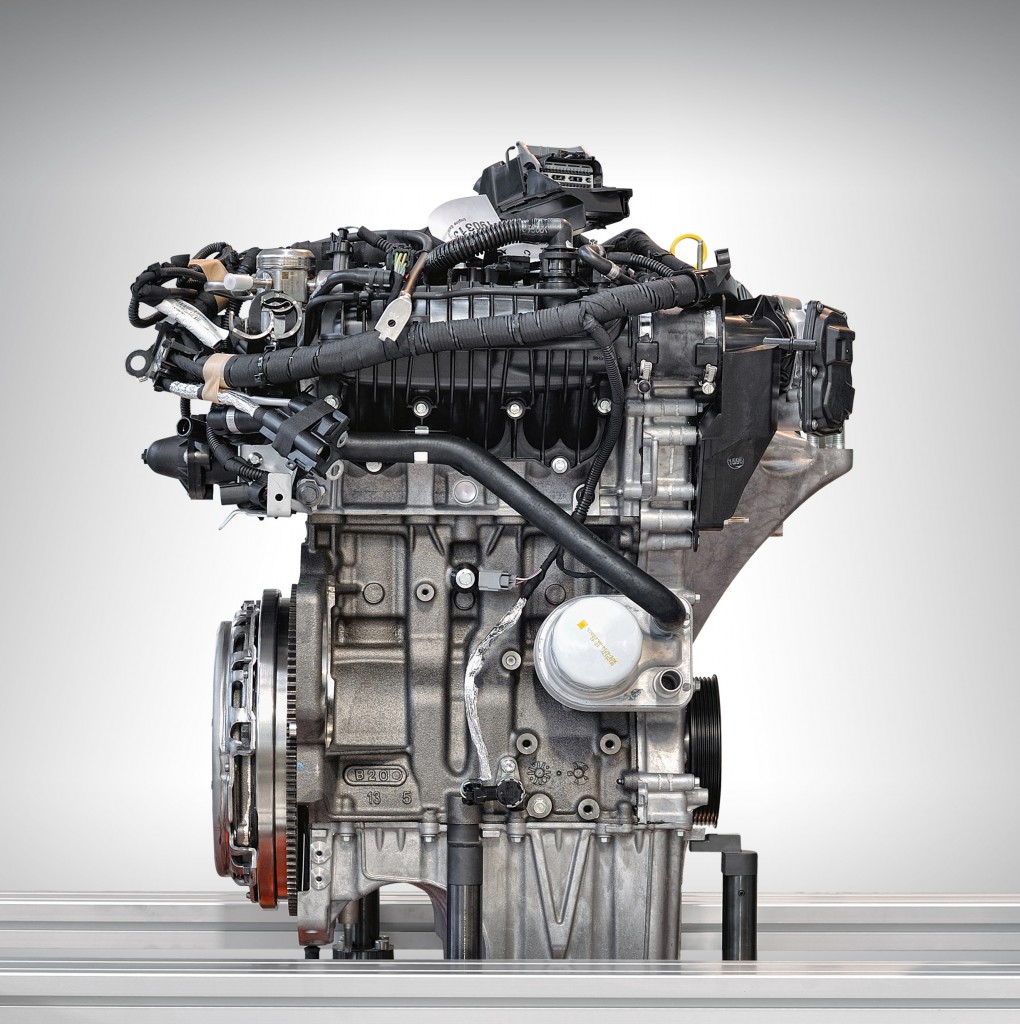
The New Fiesta Red-Black Edition uses a 140PS version of the multi-award-winning 1.0-litre EcoBoost engine
A small petrol engine that powers Ford cars including the new Fiesta has fought off competition from premium brands and supercars to win the ‘Oscars’ of the engine world for an unprecedented third time in a row.
The Motor Company’s 1.0-litre EcoBoost engine – which lowers fuel consumption without sacrificing power – today was named 2014 International Engine of the Year for its drivability, performance, economy, refinement and technology.
A panel of 82 automotive journalists from 35 countries also named the 1.0-litre EcoBoost the “Best Engine Under 1.0-litre” for the third year in a row at the Engine Expo 2014, in Stuttgart.
“To deliver the complete package of eye-popping fuel economy, surprising performance, quietness and refinement we knew this little 1.0-litre engine would have to be a game changer,” said Bob Fascetti, vice president, Ford Powertrain Engineering. “Through our One Ford approach to development, EcoBoost continues to set the benchmark for power combined with fuel efficiency from a small petrol engine.”
The engine has now won 13 major awards. In addition to collecting seven International Engine of the Year awards in three years – including Best New Engine in 2012 – the 1.0-litre EcoBoost also has been awarded the International Paul Pietsch Award 2013 for technological innovation in Germany; the Dewar Trophy from the Royal Automobile Club in Great Britain; and in the U.S., the Breakthrough Award from Popular Mechanics magazine. Ford also is the first automaker to win a Ward’s 10 Best Engines trophy for a three-cylinder engine.

Ford’s 1.0-litre EcoBoost engine has won the International Engine of the Year award for an unprecedented third consecutive year. [Click for full size image]
March of the 1.0-litre EcoBoost
Launched in Europe in 2012 with the Ford Focus, the 1.0-litre EcoBoost is now available in the UK in a further nine vehicles: Fiesta, B-MAX, EcoSport, C-MAX and Grand C-MAX, Tourneo Connect, Grand Tourneo Connect, Transit Connect and Transit Courier.
The all-new Mondeo will continue the roll-out of the 1.0-litre EcoBoost engine when it launches later this year; the smallest engine to be specified in such a large family car.
Already available with 100PS and 125PS, Ford recently debuted a new 140PS version of the engine in the new Fiesta Red Edition and Fiesta Black Edition models; the most powerful volume production 1.0-litre road cars ever, achieving 0-62 mph in 9 seconds, a top speed of 125mph and delivering 62.8 mpg and 104 g/km CO2*.
“Three years have gone and many new three-cylinder engines have appeared, but the Ford 1.0-litre EcoBoost is still the best,” said Massimo Nascimbene, juror and writer, Italy.
Some facts about the Ecoboost Engine
- The engine’s compact, low-inertia turbocharger spins at up to 248,000rpm – more than 4,000 times per second and almost twice the maximum rpm of the turbochargers boosting 2014 F1 race car engines.
- The 140PS 1.0-litre EcoBoost engine’s turbocharger delivers 1.6 bar (24psi) of boost pressure. Peak firing pressure of 124 bar (1,800psi) equates to a five-tonne African elephant standing on the piston.
- With a cast iron engine block small enough to fit in the overhead luggage compartment of an aeroplane, the engine also features an aluminium cylinder head with an integrated exhaust manifold that lowers exhaust temperatures for optimised the fuel-to-air ratio.
- Engine friction is reduced by specially coated pistons, low tension piston rings, low friction crank seals and a cam-belt-in-oil design.
- A variable displacement oil pump tailors lubrication to demand and optimises oil pressure, for improved fuel efficiency.
